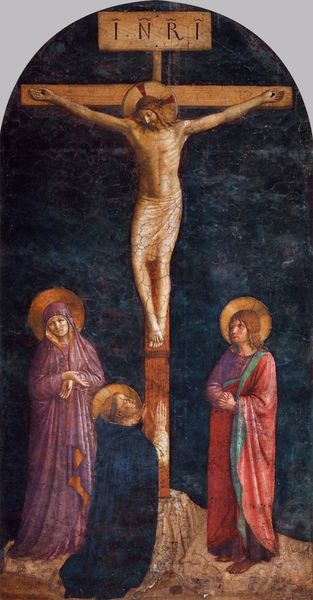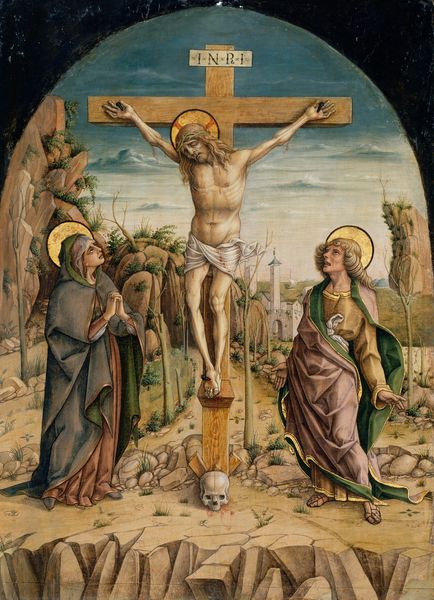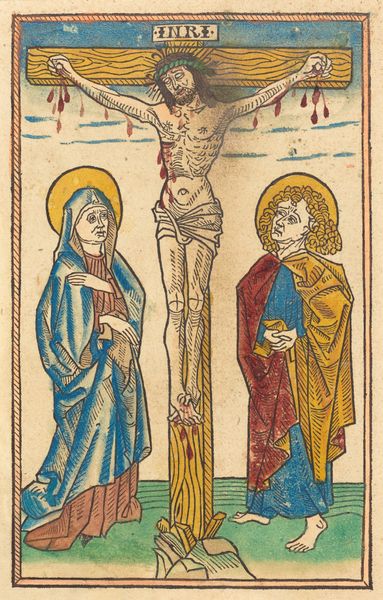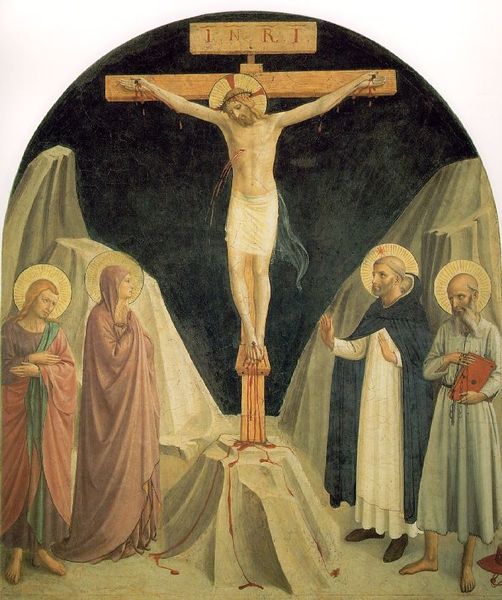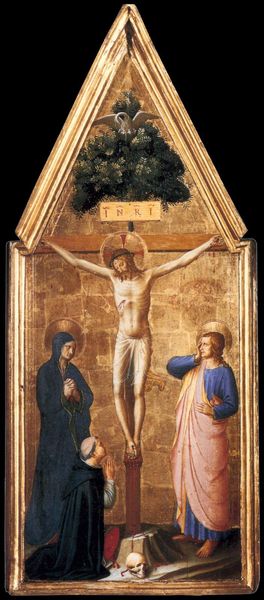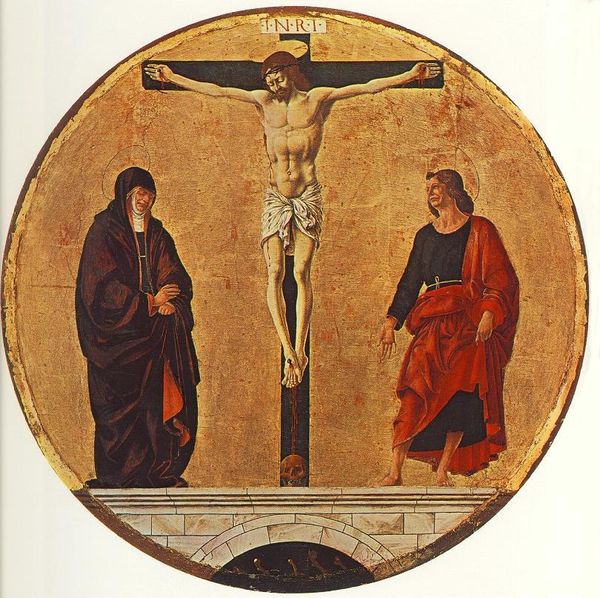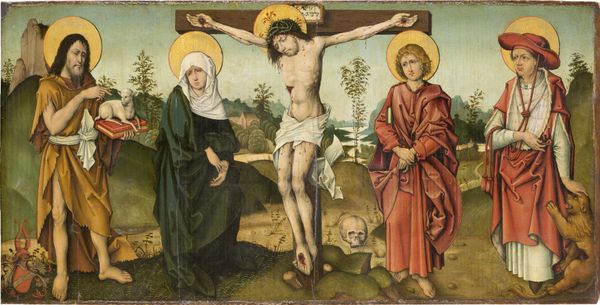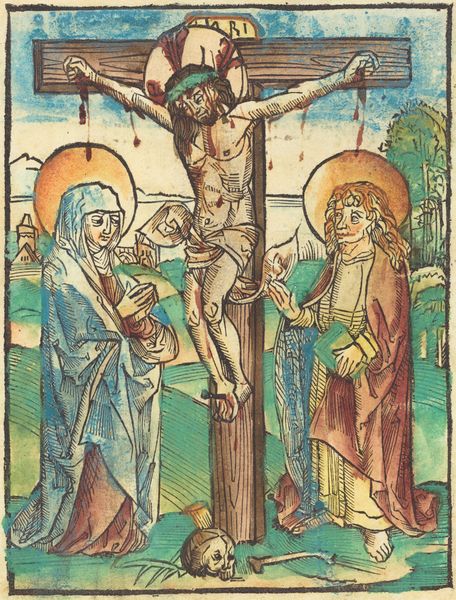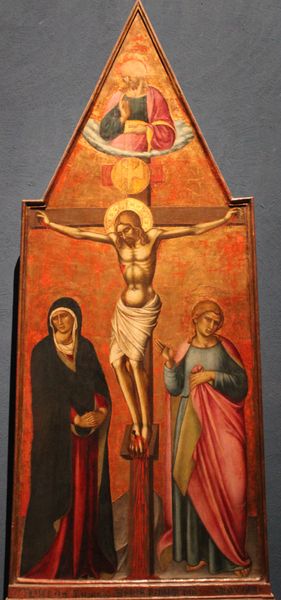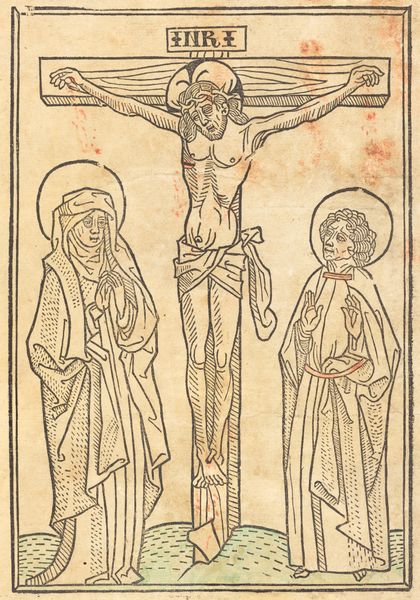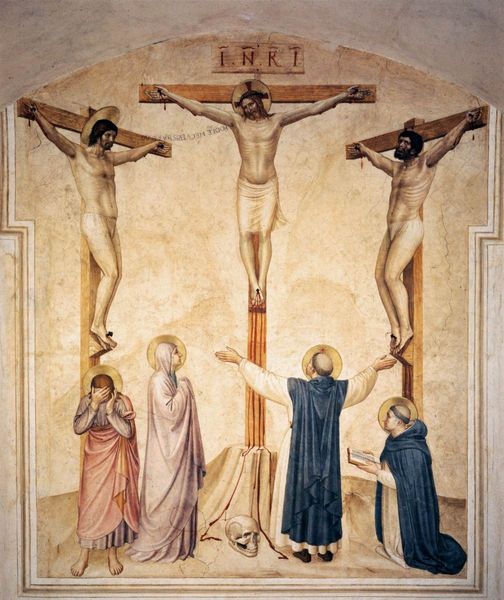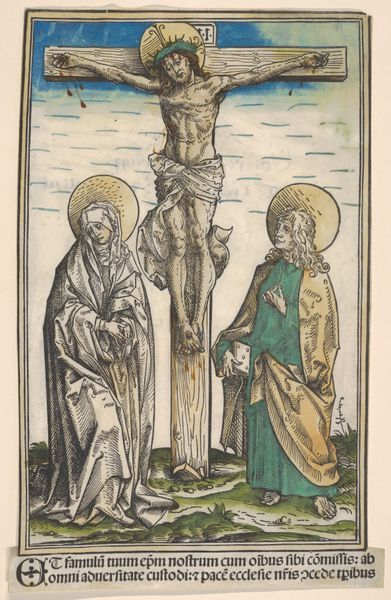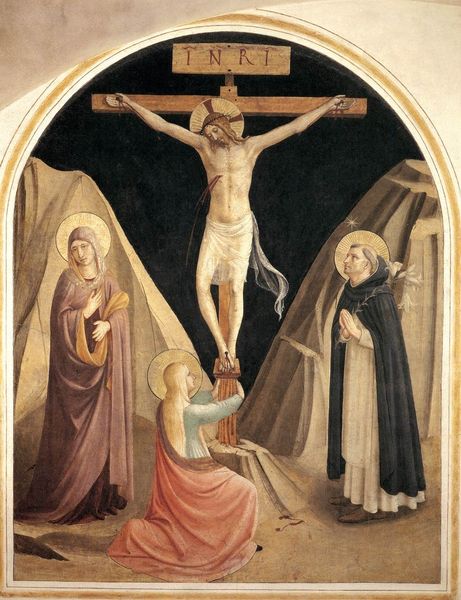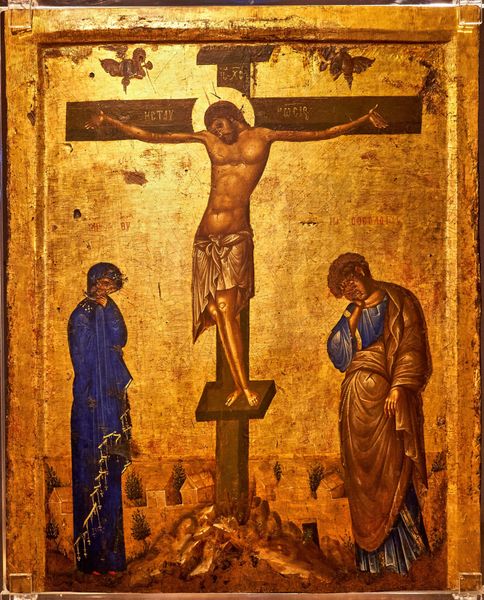
panel, painting, oil-paint
#
portrait
#
medieval
#
panel
#
painting
#
oil-paint
#
figuration
#
oil painting
#
history-painting
#
international-gothic
Copyright: Public domain
Curator: Here we have Stefan Lochner’s "Crucifixion", an oil painting on panel dating back to the International Gothic period. It resides here in the Alte Pinakothek. Editor: My first thought is how striking the redness of the backdrop is; the contrast with the pale figures emphasizes the somber tone, yet there's a certain radiance to the haloes, isn't there? Curator: The redness definitely intensifies the painting’s drama. Consider how the International Gothic style was perceived during that time. The art of the 14th and 15th centuries aimed to create a sense of otherworldliness. How does the political function influence religious perception during that period, what is this 'International Gothic style', how does the art operate in its political role? Editor: Indeed. We also must acknowledge that visual art operated as scripture, communicating moral ideals and beliefs. It's critical to unpack and highlight religious art, because it is tied up with power structures and historical injustices. And yes, what sort of politics are tied up here to shape people's behaviors, religious expectations, and moral standing? Curator: The figure on the left, perhaps the Virgin Mary, displays remarkable composure. We see the muted color of the gown—it adds to a sense of calm sadness. What could be the impact of religious representation on women's roles, the expectations of the figure representing the Virgin Mary? Editor: Her restraint also invites further engagement. We need to highlight what sort of feminine identity is being created here. If you look at art through the lens of representation, and its connection to the prevailing power dynamics and social norms of a society, what do you think these three haloed individuals are signifying and imposing? Curator: Such an analysis sheds new light on our experience of the artwork. Viewing it only in its immediate artistic context will miss opportunities. Editor: By intersecting religious art with these ideas, we may start thinking critically about identity and representation. Hopefully, this expands and reshapes our understanding of art in its cultural settings.
Comments
No comments
Be the first to comment and join the conversation on the ultimate creative platform.
